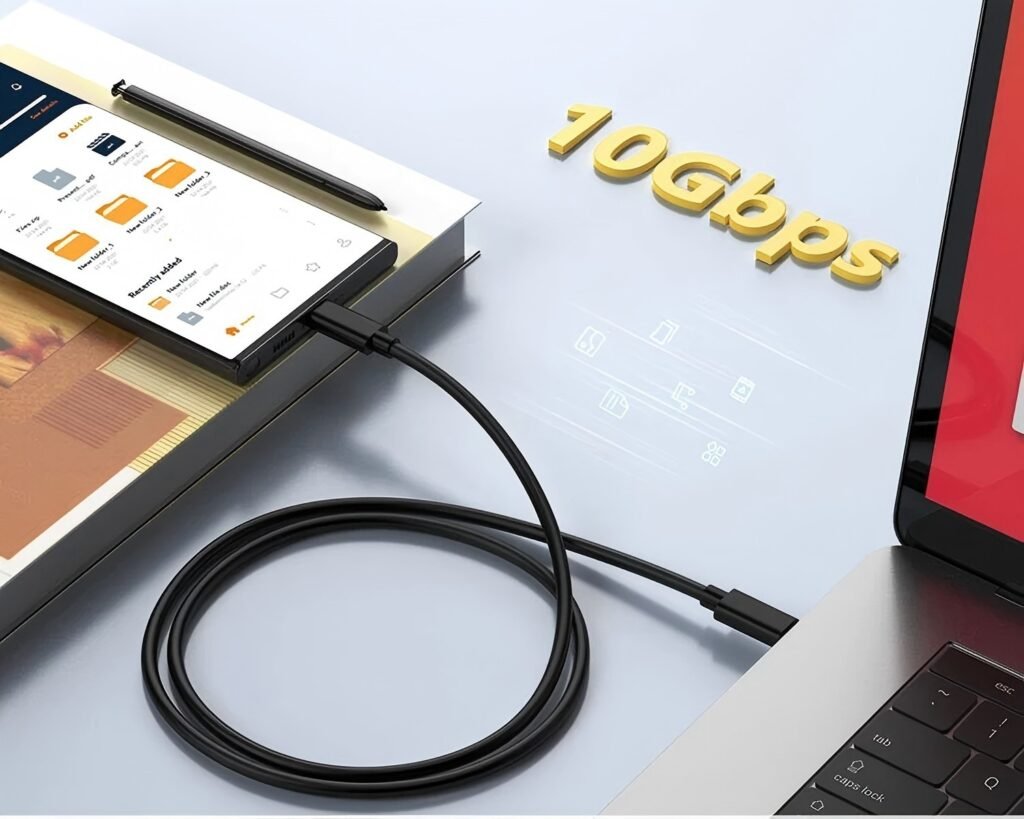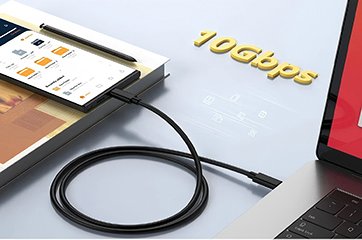
Are All USB-C Cables the Same for Charging?
USB-C represents the most recent evolution of the widely adopted Universal Serial Bus (USB) standard, known for its slim design, versatility, and ability to deliver faster charging speeds.
In this article, we’ll take a closer look at the details of USB-C technology, explore the different categories of USB-C cables, and examine the factors that determine how a cable performs when it comes to charging.
What is USB-C?
USB Type-C, developed by the USB Implementers Forum (USB-IF), is a modern connector designed to replace older USB types. One of its most notable features is the reversible plug, which eliminates the frustration of inserting the cable the wrong way. Compact and highly adaptable, USB-C can be used not only for charging but also for data transfer and video output.
Compared with traditional USB cables, USB-C supports much higher power delivery, making it capable of charging larger devices such as laptops. When paired with the USB Power Delivery (USB-PD) protocol, it can deliver up to 100 watts of power. With its impressive speed and versatility, USB-C is positioned to be the standard connector for the future.
Factors That Influence USB-C Cable Charging Performance
Several aspects can determine how well a USB-C cable performs when charging devices:
Cable Gauge (Thickness)
The term “gauge” refers to the thickness of the wire inside the cable. Thicker wires (lower gauge numbers) are able to carry more current, which allows faster charging speeds. By contrast, thinner wires (higher gauge numbers) may restrict power flow, reducing efficiency and slowing down the charging process.
Cable Length
The overall length of a USB-C cable also plays an important role. Longer cables introduce more resistance, which can cause voltage drop and energy loss along the way. This often results in slower charging. Shorter cables are typically more efficient since they allow electricity to travel with less resistance.
Compatibility
Compatibility between the cable, the device, and the power source is another crucial factor. The USB-C standard covers a wide range of capabilities, and not every cable supports the same features. Some may only handle data transfer without fast charging, while others allow quick charging but with limited power capacity. To achieve the best results, it’s essential that your cable, charger, and device all support the same protocols and power ratings.
Conclusion
To sum up, the question “Are all USB-C cables the same for charging?” can be answered with a clear no. There are proven differences in the way various USB-C cables deliver power, and these differences are primarily due to the type of cable, its internal construction, and the standards it supports. Choosing the right USB-C cable is not just about picking any connector that fits — it requires an understanding of specifications, compatibility, and your device’s charging needs.
Being able to recognize these subtle distinctions is the key to ensuring you get the most efficient, safe, and reliable charging experience.
Frequently Asked Questions
1.Are there USB-C cables that only handle charging?
Yes. Some USB-C cables are designed exclusively for power delivery and do not include the wiring needed for data transfer. These “charge-only” cables are often cheaper and optimized purely for powering devices. In many cases, they can charge as fast as — or even faster than — standard data cables, but they will not allow you to transfer files or connect peripherals.
2.How should I choose the right USB-C cable for my device?
When selecting a cable, consider three main factors:
Compatibility – Ensure the cable matches your device’s charging protocol (such as USB Power Delivery or Quick Charge).
Use case – Decide whether you need it only for charging, or also for data transfer and video output.
Build quality – Look for cables made with durable materials (braided nylon, reinforced connectors, etc.) and preferably certified by USB-IF for safety and performance.
3.Can USB-C cables be used for video output and other functions?
Yes. Certain USB-C cables, especially those that support Alternate Mode (Alt Mode) or Thunderbolt 3/4, can transmit video signals in addition to charging. These cables enable connections to monitors, projectors, and docking stations, often supporting standards like DisplayPort or HDMI. Essentially, one USB-C cable can replace multiple different cables if chosen correctly.
4.Do all USB-C cables support fast charging?
No. Fast charging requires a cable rated for higher power delivery, usually supporting USB Power Delivery (USB-PD) or another fast-charging protocol like Qualcomm Quick Charge. If a cable is not rated for sufficient wattage, it will charge at a slower speed even if you are using a powerful charger. Always check the cable’s maximum power rating — some are limited to 60W, while newer cables can handle up to 240W.
5.How do fast-charging cables actually work?
Fast-charging cables are built with lower-gauge (thicker) wires, allowing them to safely carry higher current. Many also include an e-marker chip that communicates with the charger to negotiate the optimal voltage and current for your device. This smart communication ensures not only faster charging but also safe power delivery, protecting your battery from overheating or overloading.
6.What makes one USB-C cable different from another?
Cables vary in:
Data transfer speed – Some are limited to USB 2.0 (480 Mbps), while others support USB 3.1, USB4, or Thunderbolt (up to 40 Gbps).
Power capacity – Options range from 30W to 60W, 100W, and even 240W for high-demand devices like gaming laptops.
Functionality – Some only charge, others support data transfer, video output, or full docking-station features.
7.How does USB-C influence charging speed, and what factors matter most?
USB-C enables faster charging by supporting protocols like USB Power Delivery, which allows devices to negotiate higher voltages and currents (up to 240W in the latest standard). However, the actual speed you experience depends on:
Cable quality and wattage rating
Charger output capacity
Device compatibility with fast-charging standards
Cable length and resistance
All of these must align for maximum efficiency.
8.Can one USB-C cable charge all of my devices?
In principle, yes — USB-C was designed for universal compatibility across smartphones, tablets, laptops, accessories, and even monitors. However, to get the best performance, use a cable that matches the power and data requirements of your specific device. For example, a cable that works perfectly for your phone may not deliver enough power for a gaming laptop or external GPU enclosure.


